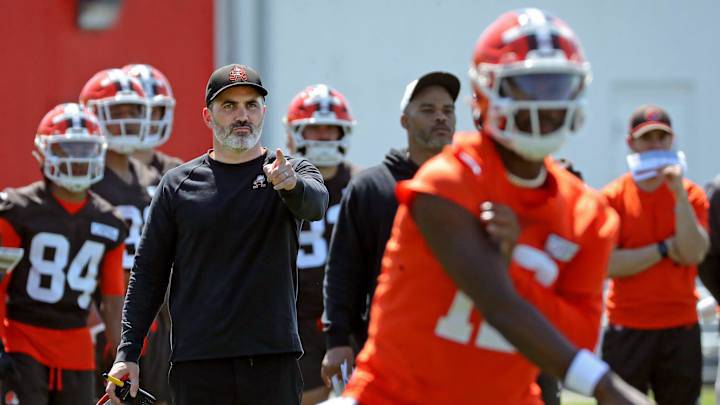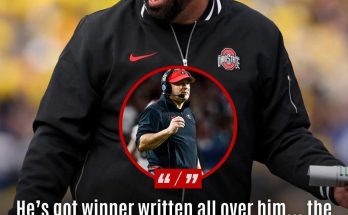The Cleveland Browns entered the 2023 season with high expectations, fueled by a talented roster and a defense ranked among the league’s best. Yet, as the season unfolded, the team’s biggest weakness became glaringly apparent: instability at the quarterback position. Head coach Kevin Stefanski, once celebrated as the NFL’s Coach of the Year, now finds himself under intense scrutiny as fans and analysts question his handling of the quarterback carousel that has plagued the Browns’ season. The criticism is not just about the injuries that have derailed the position but also about Stefanski’s decision-making, play-calling, and inability to establish consistency under center.
The quarterback woes began long before the 2023 season. Since taking over as head coach in 2020, Stefanski has cycled through multiple starting quarterbacks, including Baker Mayfield, Case Keenum, Jacoby Brissett, Deshaun Watson, and now Joe Flacco. While injuries have undeniably played a significant role—Watson’s recurring shoulder problems and Mayfield’s tumultuous final year in Cleveland come to mind—the lack of a coherent, long-term plan at the most important position in football has left many wondering whether Stefanski is the right coach to lead this team forward.
The Deshaun Watson experiment, in particular, has been a disaster. The Browns traded three first-round picks and handed Watson a fully guaranteed $230 million contract, banking on him being the franchise quarterback to elevate the team into championship contention. Instead, Watson has been a shell of his former self, struggling with injuries and inconsistent play. When he has been on the field, his performances have ranged from mediocre to outright poor, raising questions about whether Stefanski’s offensive system is the right fit for his skill set. Watson’s lack of chemistry with his receivers, combined with Stefanski’s sometimes overly conservative play-calling, has resulted in an offense that frequently stalls at critical moments.
When Watson went down with a season-ending shoulder injury, the Browns turned to 38-year-old Joe Flacco, a veteran journeyman who had been out of football until late in the season. While Flacco provided a brief spark, leading the team to a few key wins, his limitations were evident in the playoffs, where the Browns were thoroughly outmatched. The fact that Cleveland had to rely on Flacco—a quarterback who wasn’t even on a roster for most of the year—speaks volumes about the team’s lack of preparedness at the position.
Critics argue that Stefanski shares much of the blame for this mess. His inability to develop a reliable backup plan behind Watson has been a recurring issue. The Browns entered the season with Dorian Thompson-Robinson, a fifth-round rookie, and P.J. Walker, a career backup, as their only alternatives. When Watson went down, neither proved capable of steering the ship, forcing the front office to scramble for Flacco mid-season. This lack of foresight has been a major point of contention, with many questioning why the Browns didn’t invest in a more proven backup option given Watson’s injury history.
Beyond roster decisions, Stefanski’s offensive scheme has also come under fire. Known for his West Coast-inspired system that emphasizes play-action and quick throws, Stefanski’s approach has often looked out of sync with his quarterbacks’ strengths. Watson, for instance, thrived in Houston as an aggressive downfield passer, but in Cleveland, he has been relegated to a more conservative, methodical style that doesn’t fully utilize his playmaking ability. Similarly, Flacco, who has one of the strongest arms in NFL history, was often asked to execute short, timing-based throws that didn’t play to his strengths.
The lack of offensive identity has been a persistent issue under Stefanski. While the Browns have had moments of brilliance—such as Nick Chubb’s dominant rushing performances or Amari Cooper’s big receiving games—the offense has too often looked disjointed. Play-calling has been inconsistent, with Stefanski sometimes abandoning the run game too early or failing to adjust when defenses take away his preferred concepts. The result has been an offense that ranks in the middle of the pack statistically but fails to deliver in crucial situations.
Perhaps the most damning criticism of Stefanski is his track record with quarterbacks. Since arriving in Cleveland, he has failed to establish any semblance of stability at the position. Baker Mayfield, the No. 1 overall pick in 2018, regressed under Stefanski’s watch before being cast aside. Watson, the supposed savior, has been a massive disappointment. Even Flacco, who played admirably given the circumstances, was put in positions where he was set up to fail. The inability to maximize the talent at quarterback has led many to wonder whether Stefanski is simply not the right coach to develop or manage the position effectively.
The Browns’ front office has so far stood by Stefanski, but patience may be wearing thin. Ownership invested heavily in Watson, and with the team’s championship window theoretically still open, another underwhelming season could force difficult decisions. If Watson doesn’t return to form in 2024, or if the quarterback situation remains in flux, Stefanski could find himself on the hot seat.
Ultimately, the quarterback issue is the defining challenge of Stefanski’s tenure in Cleveland. Great coaches find ways to adapt, to put their players in positions to succeed regardless of circumstances. Thus far, Stefanski has not done that with his quarterbacks. Unless that changes soon, the criticism will only grow louder—and his job security will become increasingly uncertain. The Browns have the pieces to compete, but without stability under center, they will continue to fall short of expectations. And if that happens, Kevin Stefanski may not be around to see the next chapter.


